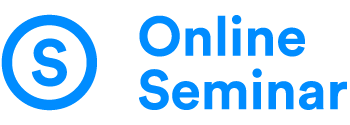Just a good idea for a webinar won’t get you there. You will also need enough participants and the right ones. How do you make sure that they know how to find the webinar and actually watch it? We share our best experiences in 6 steps. If you follow this step-by-step plan, you will significantly increase the chance of finding the right participants:
1. Determine exactly what the subject of the webinar is
Only when it is clear what the webinar is about can you find the right participants. Keep it short and simple, and summarise it in a header with a description. The header and description can then be used in the invitation. It’s a good idea to develop different headlines and see which one is the most successful.
This is an example of a successful description:
There are millions of people with good ideas, but few bring this into practice. Many are held back by the fear of the unknown and the securities they have in their permanent jobs. The same was true for the initiators of Proinvestment. For years they worked for a boss, but they felt that things could be done differently and took the step. During this webinar Jim Tehupuring (known from RTLZ and DFT) explains how they went from idea, to concept, to development and finally go-live. What was their focus when building, what obstacles have they encountered and how can you increase your effectiveness? You will get an exclusive, behind the scenes view of their journey and you will learn how you benefit from their journey in your own work. Cause going ‘live’ with your project is one thing, without clients you are nowhere. That’s why during this webinar we’ll be putting Jim Tehupuring to the test about what steps there are to market their product successfully which will certainly inspire you.
This makes the description good:
• Recognition: many people are afraid to quit their job
• A ‘hero’: someone who has already walked the path of entrepreneurship and has built up authority in this area.
• The hero has a story: it’s not all roses. This makes it realistic and attractive
• Exclusivity: we get a glimpse behind the scenes
• Direct connection: we can ask the main presenter questions, which normally wouldn’t be possible
• Inspiration: We get something out of it ourselves, namely new ideas.
3 examples of a good headline
• ING – Want to start investing without any worries?
• UWV – Applying without appropriate work experience – it’s possible!
• RTLZ – The Big Cryptoshow
2. Determine your target group very accurately
Some companies know exactly who should follow their webinar, for example in the case of internal e-learning. But certainly if you want to get leads or sales out of the webinar, that’s not always so obvious. In such cases, determine your target group as precisely as possible. Don’t be afraid to think ‘niche’. It is better to opt for: woman, 25-35 years old, independent lawyer’ than for ‘female entrepreneurs’. Such a specification makes it easier to find potential participants.
3. Choose your channels
If you know your target group, you can also determine which channels they use. In our experience, these two channels are the most successful:
• Dedicated mailings for the target group in your existing database. This option will result in the most participants. Send the mail about 2 weeks before the webinar.
• Social media campaigning for the target group outside the database. Choose short and concise via Twitter, and content and business via LinkedIn for example.
TIP: use affiliate links. It’s important to know where all registrations come from. With this knowledge you can choose to give a certain message more attention. It’s also possible that a certain channel is not successful and you don’t want to use it anymore. Affiliate links allow you to see exactly where an application comes from, which makes monitoring easy.
Important: Do you offer the possibility to watch the webinar on demand? Never share that in the mailing. If you mention this, there will be fewer live participants.
How many participants can you expect? Based on our experience, you can rely on the following figures. Of the total number of people you invite, 5% actually register for the webinar. Of the number of applications, an average of 70% actually participate in the webinar. Suppose you have invited 1000 people via your own mailing list, then you can assume that 35 people view the webinar. Of course, these figures are not applicable in the case of compulsory e-learning, among others.
4. Make sure you have a simple registration procedure
When it’s difficult to register, some people still drop out. Therefore, choose:
• A recognizable logo. Especially with webinar series, or recurring topics. This creates trust and recognition.
• A short registration form. For example, only ask for the name, mail address and phone number.
• Clear specifications about the date and time of the webinar.
• A confirmation email.
Tip: You can ask an extra question to the participants in the registration form. You can then use the information in the webinar. Remember though, only ask a question if you actually use the input.
5. Send a reminder
It happens often enough that people sign up for a webinar and don’t write it down. Then they forget it on the day itself. It’s therefore useful to remind people who have signed up for a webinar. Using our system, we always send a reminder by mail about 24 hours in advance. Just before the webinar, people who have registered receive a reminder by text message.
6. Evaluate the marketing
Even if it was an occasional webinar, it’s still wise to evaluate the marketing efforts and the webinar itself. Which message was most successful if you used more than one? Where did most of the participants come from? How big was the difference between the number of applications and the number of people that actually watched at? As an organisation, you can use all of this information for the next webinar or in further marketing.


